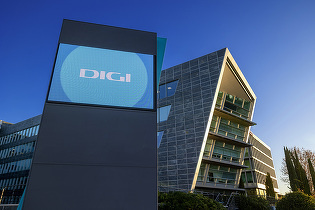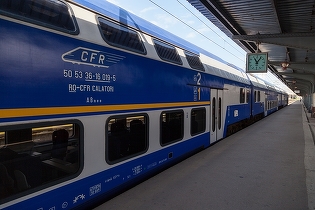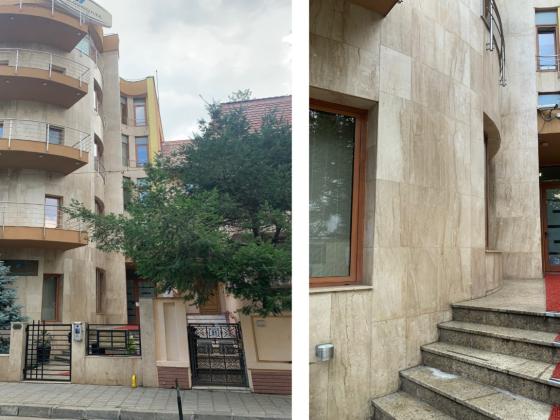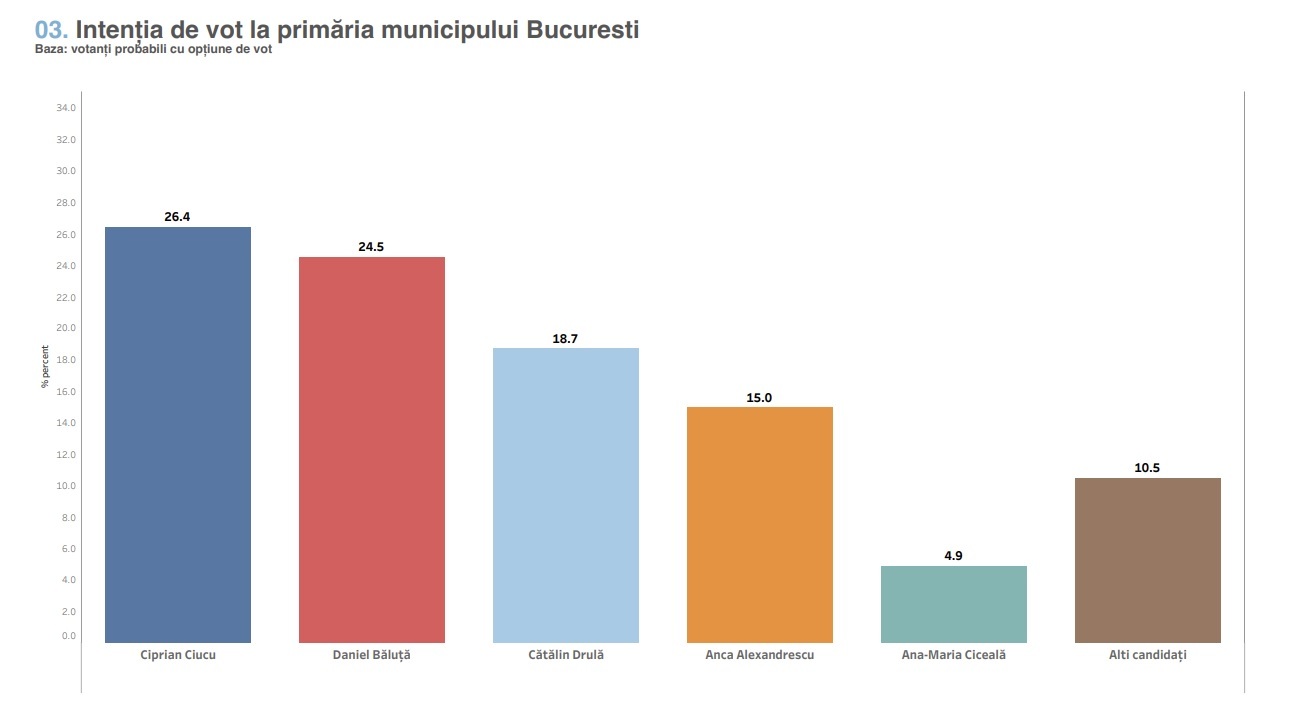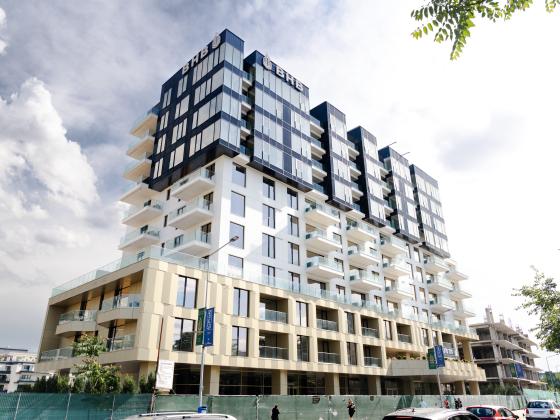Brisk Group’s UK Director, Mark Brownlee enjoys the complexity of airport projects and balancing the needs of multiple stakeholders. He believes that all airports can reach net zero by 2050 through a mix of innovative technology, creative asset adaptation and by encouraging changes to long-held patterns of traveller behaviour. Here are four ways Mark believes airports will become more sustainable…
Imagine the airport of the future. In 2030, sustainable aviation fuel (SAF) is commercially available, all airport equipment is electric, and sustainable construction, lighting, and heating/cooling measures have reduced energy consumption.
By 2040, SAF has been scaled up. There are now short-haul electric aircraft operating, and hydrogen technologies have been introduced for long haul flight. Sustainable construction and infrastructure retrofitting measures are widespread and airport energy demands are met by the provision of renewable energy sources.
Jump to 2050 and airports have now become both energy hubs and producers, with net-zero carbon emissions, supplementing the resources available to the National Grid. According to the ICF Report for UK Sustainable Aviation, up to 75% of UK flights could be fuelled using SAF.
The predictions above were made in The Evolution of Airports: A Flight Path to 2050 report. They demonstrate how sustainability lies at the very centre of future airport design and function. Since the first commercial flight, the airport has always evolved according to changing patterns of human behaviour, technological innovation and the demands of its multiple and diverse stakeholders. The key to aviation’s future success will be its willingness to embrace multiple eco-friendly measures, according to Mark Brownlee, Brisk Group’s UK Director.
“It is already possible to have net zero airports, in the same way we can currently design net zero buildings, but for people to become satisfied that flight is sustainable, what really needs to be focused on is the burning of fossil fuels from aircraft engines.”
There are many ways airports and aviation are shifting toward a climate-friendly future. Here, Mark talks through four key areas.
Check-in and security control won’t exist in the future airport
Airports are heavily process driven. When passengers depart, there is a clear route to follow from check-in to baggage drop-off, through security to departure gates and then boarding. How can airports manage this “process” in a more streamlined way that is both cost-effective and saves energy? According to Mark, increased use of new biometric and security technology will reduce the space required for physical assets such as check-in desks and security scanners. Moving towards digital proof of identity and decreasing the need for physical ticketing documentation will significantly reduce the area and energy required to build and operate a functioning airport.
By streamlining the passenger process, airports save space, and security processes become seamless. According to Mark, “New technologies around biometrics and security will ease the passenger process through the terminal, making it much easier and quicker to go through security – the goal here is for the passenger to not even realise that this process has taken place.”
The National Cyber Security Centre confirms that many airports now use automated facial recognition at border control to compare the face of a passport holder to the face on their passport. China is leading on this, according to Find Biometrics, who stated in 2022 that 86 percent of Chinese airports plan to install self-service biometric boarding gates within the next two years, while more than half (58 percent) want to be able to provide travellers with a single biometric token that could be used throughout the entire passenger journey.
Check-in and baggage systems have already changed, with the ability to check in online and progress straight to security. In the future, your baggage may also be ‘checked-in’ at home and picked up via courier or drone – you won’t see it again until your destination. Mark explains, “The security line will cease to exist, as passengers could potentially go straight from home to their gate. Airports must then become enjoyable places to dwell, not just for passengers but for all business and leisure users.
“Creating change on this scale will need to be managed carefully. Airports and airlines need to be trusted by passengers to accept new technology as part of a new modern travelling norm.”
What if these systems fail? Mark believes there will always be a need for human intervention as a back-up, “Airport architects and engineers always analyse where a ‘single point of failure’ might be, and creative mechanisms and back-up systems ensure failures either do not occur or can be dealt with efficiently.”
Airports will become destinations for non-flyers
Mark believes that in the future, airport terminals won’t have separate landside and airside areas. With check-in, security and baggage taken care of using new technology, airports become hubs for business, entertainment, retail and leisure.
For airport owners, this is good news — a potential increase in non-aeronautical revenue. Non-aero income is a key part of airport income, and owners are under pressure to improve their profit margins alongside pursuing their net zero goals. Airports must accelerate their goal to become destinations for non-flyers, with new retail, leisure and business opportunities.
“Singapore Changi Airport has done this very well,” explains Mark, adding that the airport is very popular with Singapore’s residents, attracted by the butterfly garden, a suspended trampoline attraction, a cacti exhibit, playgrounds, sculptures and high-quality restaurants. “Having a constant flow of non-travellers in an airport helps smooth out the ‘peaks and troughs’ between transactions for retail and F&B outlets.”
One factor influencing the success of the “airport as a destination” is the ongoing reduction in noise levels. Mark explains, “Living near an airport isn’t as detrimental to your quality of life as it once was. New technology is being used to create much quieter aircraft, and noise levels are now much more tightly controlled by regulators and airport operators for early or late flights.” Greenfield sites have been popular for airport developments in recent decades, but could lower noise levels mean that more airports will return to city centre locations?
“There’s certainly a big difference between current aircraft noise and what aircraft were like 10 or 20 years ago,” explains Mark. “The other big change is that airports are managing noise better. At Heathrow for example, airlines are charged for late or early departures and arrivals. If you arrive outside of your slot, you also get charged an increased levy. The airport also alternates runway use to give nearby residents a break.”
All good news for reduced noise pollution. But what will happen when drones become mainstream? “Getting the noise right around electric vertical take-off and landing (eVTOL) aircraft is going to be critical,” says Mark. “The noise produced may be quieter than a jet engine, but it could be just as annoying particular as flight frequency increases. Solving this issue is one of the major concerns around mass uptake for this type of electric aircraft.”
Technology will accelerate operational efficiency
Biometric security is just one area where airports are using technology to improve efficiencies. According to The Evolution of Airports: A Flight Path to 2050 report, “By 2030, AI and the Internet of Things (IoT) technology will be a core part of airport operations. The use of a digital twin of an airport will lead to faster and better decision making through the visualization, stimulation, and prediction of hypothetical situations and changes.” By being able to anticipate fluctuations in energy usage and passenger flow using AI, airports ultimately become more sustainable.
One area in which technology may drastically alter airport asset design is in air traffic control. Today, air traffic is generally controlled from an airside tower, but this will change. According to Mark, “Think about all the carbon that goes into building an air traffic control tower. The engineering is really complicated; consider the vibration control and rigidity needed to reduce sway in the tower in order to make it a comfortable place for people to concentrate and work.
“Control towers are usually in an airside location, so it's difficult for people to get to work and leave again, and they’re limited on space, so you can't have large staff facilities immediately accessible at the top of the tower.”
Mark explains that new camera technology allows air traffic controllers to “see” the aircraft via high-definition digital screens, “You don't need to put people up a tower anymore and remote technology means that staff need not even be located near the airport in the future. It makes much more sense to have staff in an accessible location with shared common spaces clustered with other staff facilities.”
London City Airport was the first major international airport to operate entirely using remote control tower technology. In the future, this technology will mean that air traffic control for multiple airports could be served by a single central control room. All current Brisk Group greenfield airport projects have this as a central design driver – the air traffic control tower used to be an iconic part of the airport, but this will be no longer be the case in the future.
The future airport is electric and hydrogen-powered
Airport operators are investing heavily in eco-friendly electric vehicle fleets, ground handling equipment, buses and aircraft tugs. According to a 2020 report by Green Fleet, around 750 airside vehicles at London Heathrow are now electric which means that Heathrow operates the largest fleet of electric airside vehicles in Europe. At many airports, traditional airfield lighting has been phased out and replaced with energy efficient LED technology.
The obvious challenge with this shift towards electrification, is the impact on current airport infrastructure. Mark explains, “If a fleet moves to electric, there's a knock-on impact to the infrastructure in terms of electrical load and then physical space due to the time it takes to charge the vehicle. At the moment, short haul or low cost aircraft tend to have very quick turnaround times and with current battery technology, the time and space required to charge will become an issue for commercially available eVTOL short haul flight.” Upgrading infrastructure for quick charging is expensive, so the decision to invest must be commercially viable as well as environmentally sound.
“Another future technology for aircraft is hydrogen power which has a very different impact on airport infrastructure. Hydrogen must be kept extremely cold and is very hard to contain, so refuelling safely at commercial airports will become a big consideration in the future.” The challenges around hydrogen-fuelled aircraft are being met by Airbus and Safran, which have completed a proof-of-concept of a hydrogen conditioning system, adapted to power an aircraft turbine engine. This project uses equipment designed for spacecraft, and engineers aim to build a fully integrated hydrogen engine and aircraft demonstrator.
How Brisk Group helps airports become future-ready
Creating the infrastructure that allows airports and airlines to use alternative fuel sources will become crucial as we build airports of the future. The global aviation industry has committed to achieving net zero carbon by 2050. Brisk Group fully supports this pledge; all its current airport projects and clients have high sustainability aspirations which are underpinned by either LEED or BREEAM certification.
“We can get to net zero through sustained and coordinated effort,” explains Mark. “Brisk Group is working with its airport clients to achieve ambitious sustainability goals.”
